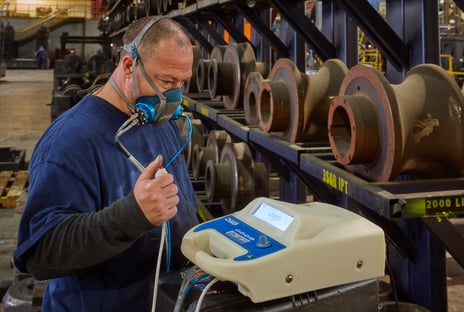“No Shave November” and OSHA’s Stance on Facial Hair
There is a common question I receive from many companies which is not based around technological advantages, accuracy, or even OSHA standards on how to perform mask fit testing. This question comes in the form of, “Do I really have to shave to wear a mask?” “Do I have to make my employees shave to do fit testing?” Many times it is more of a statement than question, “My employees aren’t going to be happy that they have to shave during No-Shave November!” There is even debate in the respiratory community--or more accurately confusion--on what OSHA actually states about shaving and facial hair with mask programs.

First, OSHA doesn’t actually say anything about shaving or when you have to shave. But before you allow the beards to begin growing, OSHA does have a firm stance on the matter of facial hair and mask seals. OSHA code 1910.134(g)(1) is specific to facepiece seal protection and states:
1910.134(g)(1)(i)
The employer shall not permit respirators with tight-fitting facepieces to be worn by employees who have:
1910.134(g)(1)(i)(A)
Facial hair that comes between the sealing surface of the facepiece and the face or that interferes with valve function; or
1910.134(g)(1)(i)(B)
Any condition that interferes with the face-to-facepiece seal or valve function.
This is an unambiguous statement and firm regulation that mandates that the face-to-facepiece seal must be free of facial hair. According to OSHA, facial hair cannot come between the seal of the face and the mask. Employers need to ensure that they have a firm policy in place to abide by this OSHA requirement to be in compliance. This does not mean that employees cannot have mustaches or other facial hair (unless this is the policy of the company for those who wear respirators). The employee simply must not have facial hair that interferes with the seal or the valve function.
Second, it is important to understand and explain to beard-loving employees why this is an important OSHA regulation. The face-to-facepiece seal is an extremely important part of the protection a mask provides. A safety professional or Industrial Hygienist can properly identify respiratory hazards, properly purchase PPE that will protect against the hazard, and create a strong Respiratory Protection Program for the employees; but if the mask is not properly worn, these programs are compromised. Companies, Safety Professionals, and most importantly the Employee, are all at risk when the programs aren’t completely followed. Many years of fit testing with accurate fit test methods has proven that facial hair allows leak to enter the mask through the face-to-facepiece seal.
Relax this November! Enjoy growing some facial hair, as long as it doesn’t compromise the seal of your mask and your safety!
Quantifit Annual Calibration FAQs & Service Return
The need to deal with inhalation valves.
Written by Luke Allen
Luke Allen has an extensive background in the Safety & Health field including over 9 years of employment with OHD Inc. Luke currently holds the Chief Sales Officer role for OHD managing sales and distribution worldwide. Luke’s main focus has been in respiratory mask fit testing and noise monitoring, both personal and environmental.

